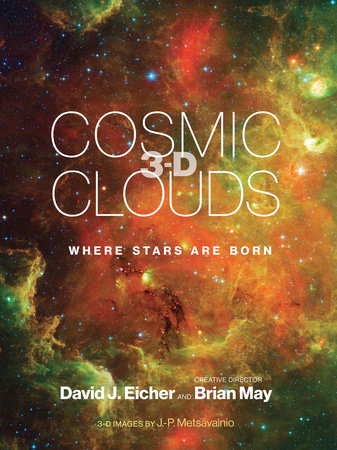Amazing 3-D images take readers inside the birth and death of stars.This visually amazing volume, with text and 3-D images, takes readers inside the birthplace of stars—the cosmic clouds called nebulae. Nebulae (from the Latin for “cloud” or “fog”) are stellar nurseries, frequently intermingled with clusters of young stars. Seen in the night sky, they glow, energized by the new stars within and around them. Cosmic Clouds 3-D offers hundreds of magnificent images of nebulae captured by ground-based and space telescopes. Along with the high-resolution views of nebulae are unique stereo views that show the nebulae in three dimensions.
As we observe the birth of stars in these great clouds of gas, we are peering into the world of infant suns, seeing a process that for our own Sun took place some 4.6 billion years ago. The story of elements in nature, of why we are here, of our cosmic roots, is strongly tied to the story of stars in our galaxy and universe. And that means exploring the lives of stars, how stars come to be, what happens during their lifetimes, and how they, too—like humans—eventually die. We may not all know it, but we are part of the biggest recycling program that exists—the birth, life, and death of stars.
A 3-D viewer, designed by astrophysicist (and lead guitarist with the rock group Queen) Brian May, is included with the book.






